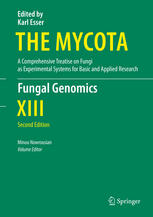

Most ebook files are in PDF format, so you can easily read them using various software such as Foxit Reader or directly on the Google Chrome browser.
Some ebook files are released by publishers in other formats such as .awz, .mobi, .epub, .fb2, etc. You may need to install specific software to read these formats on mobile/PC, such as Calibre.
Please read the tutorial at this link: https://ebookbell.com/faq
We offer FREE conversion to the popular formats you request; however, this may take some time. Therefore, right after payment, please email us, and we will try to provide the service as quickly as possible.
For some exceptional file formats or broken links (if any), please refrain from opening any disputes. Instead, email us first, and we will try to assist within a maximum of 6 hours.
EbookBell Team

5.0
70 reviewsThe volume is divided into four sections, the first of which, Genome Sequences and Beyond, illustrates the impact of genome-based information and techniques on research ranging from model organisms like yeast to less-studied basal fungal lineages. Furthermore, it highlights novel types of analysis made possible by multi-genome comparisons as well as the impact of genomics on culture collections and vice versa. The second section, Cell and Developmental Biology, addresses questions that are important for fungal biology, e.g. the development of fungal fruiting bodies, and biology in general, e.g. chromatin organization and circadian rhythms. The third section, Genomics for Biotechnology, covers the search for plant biomass-converting enzymes in fungal genomes and work with industrially important fungi. The fourth section, focusing on Pathogenicity, offers chapters on the genomic analysis of plant and animal/human pathogens. It illustrates how genomics at all levels, from genome to metabolome, is used to study mechanisms of the interactions of fungi with other organisms.